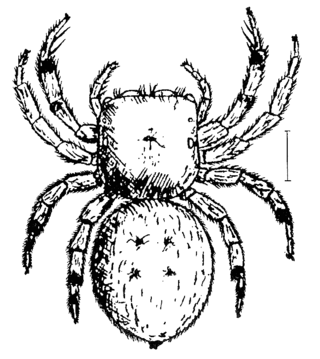
Irura is a genus of the spider family Salticidae.

Simaetha is a genus of Australasian jumping spiders that was first described by Tamerlan Thorell in 1881. They resemble members of Simaethula and Stertinius.

Synagelides is a genus of Asian jumping spiders that was first described by W. Bösenberg & Embrik Strand in 1906. This genus and Agorius are separated as a genus group, sometimes called subfamily Agoriinae, but more recently downranked to tribe Agoriini of the Salticoida clade in subfamily Salticinae.

Episinus is a genus of comb-footed spiders that was first described by Pierre André Latreille in 1809.
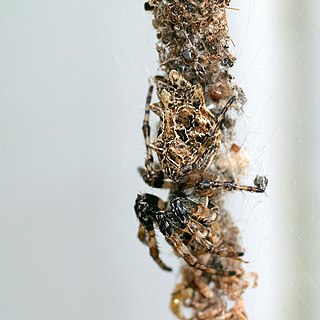
Cyclosa, also called trashline orbweavers, is a genus of orb-weaver spiders first described by Anton Menge in 1866. Widely distributed worldwide, spiders of the genus Cyclosa build relatively small orb webs with a web decoration. The web decoration in Cyclosa spiders is often linear and includes prey remains and other debris, which probably serve to camouflage the spider. The name "Cyclosa" comes from Greek 'to move in a circle', referring to how it spins its web.
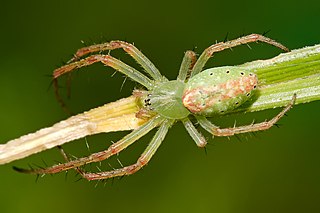
Cyrtophora, the tent-web spiders, is a genus of orb-weaver spiders first described by Eugène Simon in 1895. Although they are in the "orb weaver" family, they do not build orb webs. Their tent-like, highly complex non-sticky web is sometimes considered a precursor of the simplified orb web. These webs are aligned horizontally, with a network of supporting threads above them. These spiders often live in colonies. Females have a body length of mostly about 10 millimetres (0.39 in) long. Some members, including Cyrtophora cicatrosa, exhibit the ability to change colour rapidly.

Clubiona is a genus of sac spiders that was first described by Pierre André Latreille in 1804.

Pardosa is a large genus of wolf spiders, commonly known as the thin-legged wolf spiders. It was first described by C. L. Koch, in 1847, with more than 500 described species that are found in all regions of the world.
Chorizopes is a genus of orb-weaver spiders first described by O. Pickard-Cambridge in 1871. Though it belongs to the orb weaver family, these spiders move through leaf litter preying on other spiders rather than spinning webs. The original name was "Chorizoopes", but the emendationChorizopes by Tamerlan Thorell is now protected by usage.

Cyrtarachne is a genus of orb-weaver spiders first described by Tamerlan Thorell in 1868.
Psechrus is a genus of cribellate araneomorph spiders in the family Psechridae, and was first described by Tamerlan Thorell in 1878.

Belisana is a genus of cellar spiders that was first described by Tamerlan Thorell in 1898.
Epidius is a genus of crab spiders that was first described by Tamerlan Thorell in 1877. It is a senior synonym of Pothaeus.
Talaus is a genus of crab spiders in the family Thomisidae, containing thirteen species.
Cnodalia is a genus of Asian orb-weaver spiders first described by Tamerlan Thorell in 1890.

Eriovixia is a genus of orb-weaver spiders first described by Allan Frost Archer in 1951.
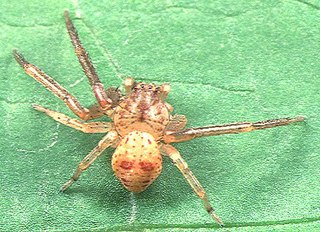
Pharta is a genus of crab spiders, family Thomisidae, first described by Tamerlan Thorell in 1891.

Asceua is a genus of Asian ant spiders first described by Tamerlan Thorell in 1887.
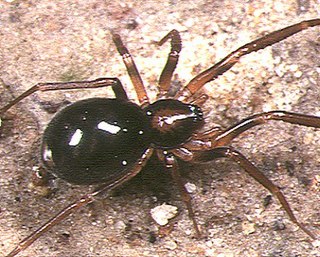
Otacilia is a genus of araneomorph spiders in the family Phrurolithidae, first described by Tamerlan Thorell in 1897.













